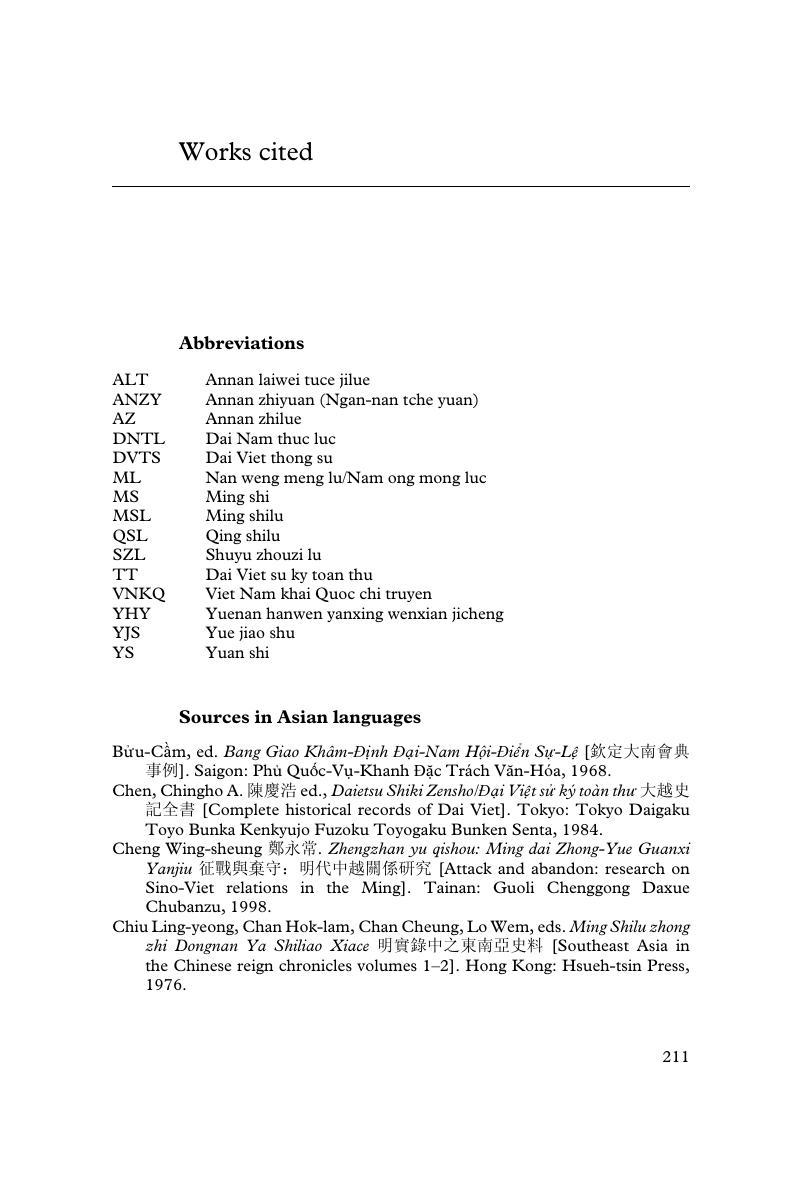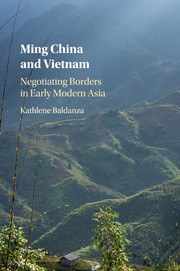Book contents
- Ming China and Vietnam
- Studies of the Weatherhead East Asian Institute, Columbia University
- Ming China and Vietnam
- Copyright page
- Dedication
- Contents
- Figures
- Maps
- Book part
- Map
- Introduction: The power of names
- Part I Southern scholars in the North
- Part II Officials in the borderlands
- Part III The return of the Le dynasty
- Conclusion: Dai Viet in the Ming-Qing transition
- Works cited
- Index
- Studies of the Weatherhead East Asian Institute Columbia University
- References
Works cited
Published online by Cambridge University Press: 05 March 2016
- Ming China and Vietnam
- Studies of the Weatherhead East Asian Institute, Columbia University
- Ming China and Vietnam
- Copyright page
- Dedication
- Contents
- Figures
- Maps
- Book part
- Map
- Introduction: The power of names
- Part I Southern scholars in the North
- Part II Officials in the borderlands
- Part III The return of the Le dynasty
- Conclusion: Dai Viet in the Ming-Qing transition
- Works cited
- Index
- Studies of the Weatherhead East Asian Institute Columbia University
- References
Summary

- Type
- Chapter
- Information
- Ming China and VietnamNegotiating Borders in Early Modern Asia, pp. 211 - 222Publisher: Cambridge University PressPrint publication year: 2016



